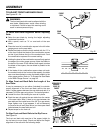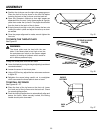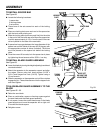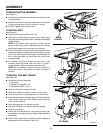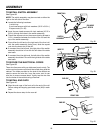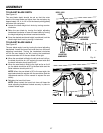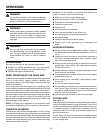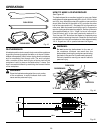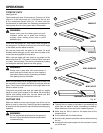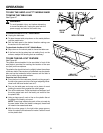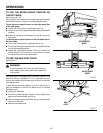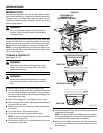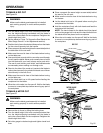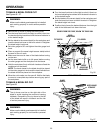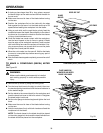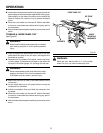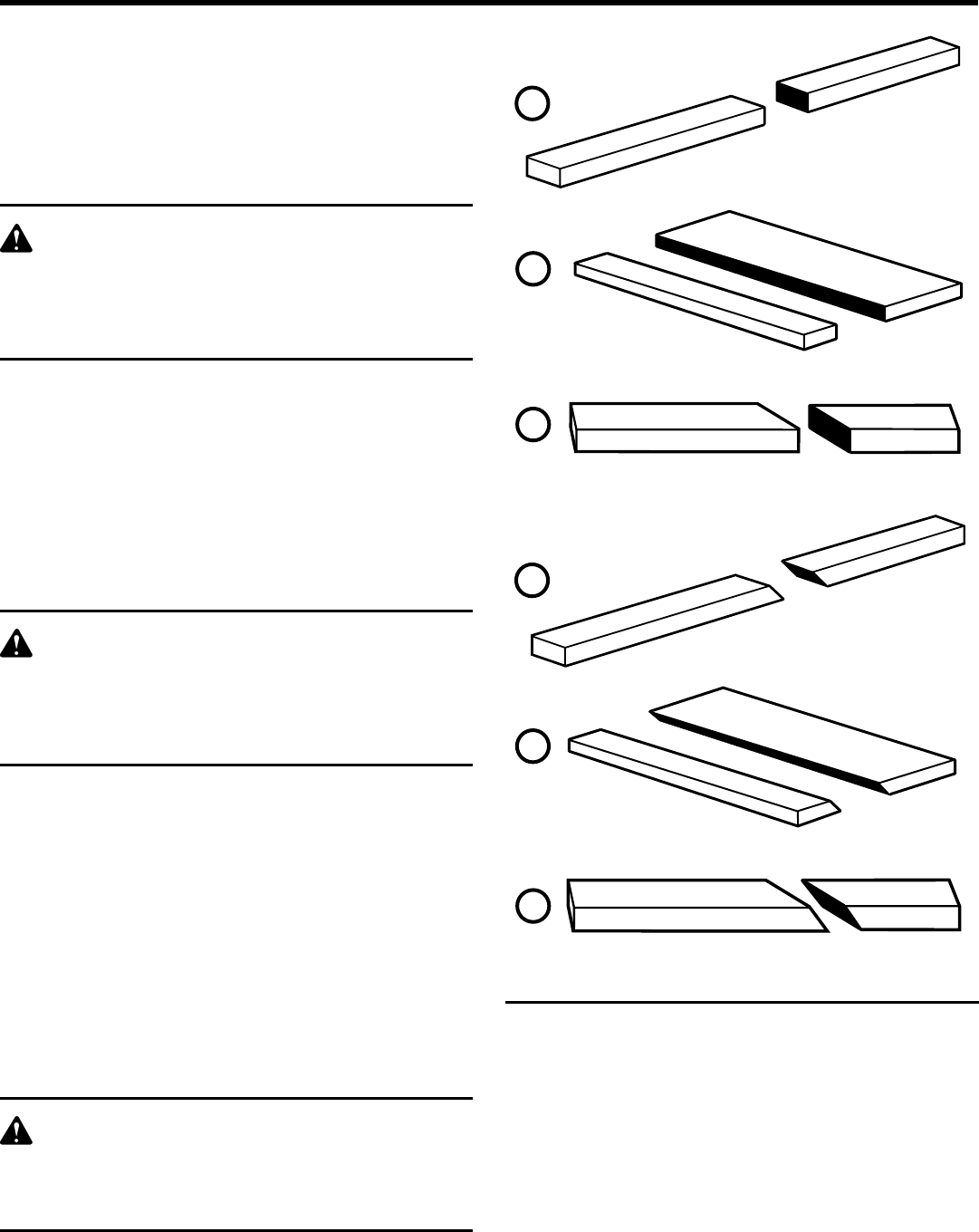
30
31
OPERATION
BEVEL RIP CUT
RIP CUT
CROSS CUT
MITER CUT
COMPOUND (BEVEL) MITER CUT
BEVEL CROSS CUT
1
TYPES OF CUTS
See Figure 46.
There are six basic cuts: 1) the cross cut, 2) the rip cut, 3) the
miter cut, 4) the bevel cross cut, 5) the bevel rip cut, and
6) the compound (bevel) miter cut. All other cuts are
combinations of these basic six. Operating procedures for
making each kind of cut are given later in this section.
WARNING:
Always make sure the blade guard and anti-
kickback pawls are in place and working
properly when making these cuts to avoid
possible injury.
Cross cuts are straight 90° cuts made across the grain of
the workpiece. The wood is fed into the cut at a 90° angle
to the blade, and the blade is vertical.
Rip cuts are made with the grain of the wood. To avoid
kickback while making a rip cut, make sure one side of the
wood rides firmly against the rip fence.
Miter cuts are made with the wood at any angle to the
blade other than 90°. The blade is vertical. Miter cuts tend
to “creep” during cutting. This can be controlled by holding
the workpiece securely against the miter gauge.
WARNING:
Always use a push stick with small pieces of
wood, and also to finish the cut when ripping a
long narrow piece of wood, to prevent your hands
from getting close to the blade.
Bevel cuts are made with an angled blade. Bevel cross cuts
are across the wood grain, and bevel rip cuts are with the
grain. The rip fence must always be on the right side of the
blade for bevel rip cuts.
Compound (or bevel) miter cuts are made with an angled
blade on wood that is angled to the blade. Be thoroughly
familiar with making cross cuts, rip cuts, bevel cuts, and
miter cuts before trying a compound miter cut.
CUTTING TIPS
Dado and rabbet cuts are non-through cuts which can be
either rip cuts or cross cuts. Carefully read and understand
all sections of this operator’s manual before attempting any
operation.
WARNING:
Do not use blades rated less than the speed of
this tool. Failure to heed this warning could result
in personal injury.
2
6
4
5
3
n The kerf (the cut made by the blade in the wood) will be
wider than the blade to avoid overheating or binding.
Make allowance for the kerf when measuring wood.
n Make sure the kerf is made on the waste side of the
measuring line.
n Cut the wood with the finish side up.
n Knock out any loose knots with a hammer before making
the cut.
n Always provide proper support for the wood as it comes
out of the saw.
Fig. 46



